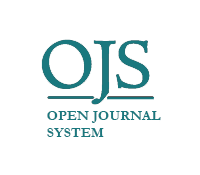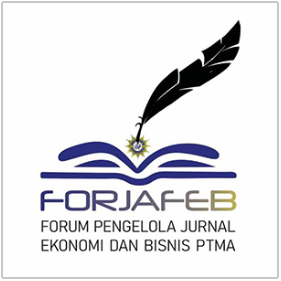Extended Tam: Actual Technological Determination And Its Impact On SMEs
DOI:
https://doi.org/10.22219/jrak.v12i3.21346Keywords:
Covid-19, SMEs, Use of TechnologyAbstract
This study aims to examine and analyze the factors that can influence the actual use of technology in SMEs through the extended technology acceptance approach. The method used is PLS analysis with 299 respondents from all UMKM in east java. The results of this study show that basically when individuals have the attitude to accept the use of technology, it will indirectly increase public interest in using technology so that it can increase the effectiveness, individual performance, and quality of financial reports in a UMKM. However, the effectiveness of using technology can't affect the size of a UMKM, because based on the results of questionnaires and interviews with respondents that the size of the company as seen from the total turnover and assets can't be influenced by the use and intensity of technology. The new finding from this research is the actual use of technology is able to mediate between behavioral intentionin individual performance and the quality of MSME financial reports is very large.
Downloads
References
Agmeka, F., Wathoni, R. N., & Santoso, A. S. (2019). The influence of discount framing towards brand reputation and brand image on purchase intention and actual behaviour in e-commerce. Procedia Computer Science, 161, 851–858. https://doi.org/10.1016/j.procs.2019.11.192
Ajzen, I. (1991). The theory of planned behavior. Organizational Behavior and Human Decision Processes, 50(2), 179–211. https://doi.org/10.1016/0749-5978(91)90020-T
Amri, A. (2020). Dampak Covid-19 Terhadap UMKM di Indonesia. Jurnal Brand, 2(1), 147–153. https://www.academia.edu/42672824/Dampak_Covid-19_Terhadap_UMKM_di_Indonesia
Appiah, B., Kretchy, I. A., Yoshikawa, A., Asamoah-Akuoko, L., & France, C. R. (2021). Perceptions of a mobile phone-based approach to promote medication adherence: A cross-sectional application of the technology acceptance model. Exploratory Research in Clinical and Social Pharmacy, 1, 100005. https://doi.org/10.1016/j.rcsop.2021.100005
Baridwan, Z. (2012). Analisis Keprilakuan Individu terhadap Implementasi Sistem Informasi Akuntansi: Model penerimaan dan Kesuksesan Sistem Informasi Berbasis Teknologi. In Disertasi, PDIA Universitas Brawijaya.
Baron, R. M., & Kenny, D. A. (2018). Acceptable femininity? Gay male misogyny and the policing of queer femininities. European Journal of Women’s Studies, 25(3), 310–324. https://doi.org/10.1177/1350506818764762
Chen, C. L., & Wu, C. C. (2020). Students’ behavioral intention to use and achievements in ICT-Integrated mathematics remedial instruction: Case study of a calculus course. In Computers and Education (Vol. 145). Elsevier Ltd. https://doi.org/10.1016/j.compedu.2019.103740
Christian, A. B., & Rita, M. R. (2016). Peran Penggunaan Informasi Akuntansi Dalam Pengambilan Keputusan Untuk Menunjang Keberhasilan Usaha Role Of The Use Of Accounting Information In Decision Making To Support Business Success. Jurnal EBBANK, 7(No. 2), 77–92.
Davis, F.D., R. P. Bagozzi, dan P. R. W. 1992. (1992). Extrinsic and Intrinsic Motivation to Use Computers in The Workplace. Applied Social Psycholog, 22(14), 1111–1132.
Dinnata, R. Y. W. (2020). UMKM Diyakini Mampu Dongkrak Ekonomi Jawa Timur. 6 September 2020. https://www.ayosurabaya.com/read/2020/09/06/2795/umkm-diyakini-mampu-dongkrak-ekonomi-jatim
Estriegana, R., Medina-Merodio, J. A., & Barchino, R. (2019). Student acceptance of virtual laboratory and practical work: An extension of the technology acceptance model. Computers and Education, 135(February), 1–14. https://doi.org/10.1016/j.compedu.2019.02.010
Febrianti, D., Hariadi, B., & Baridwan, Z. (2019). Techology Acepptance Model Sebagai Prediktor Penggunaan SIMDA. Jrak, 9(1), 46–63. https://doi.org/10.22219/jrak.v9i1.43
Hani, S., & Fauzi, Z. (2017). Persepsi Pelaku UKM Terhadap Penyelenggaraan Laporan Keuangan. JAKPI - Jurnal Akuntansi, Keuangan & Perpajakan Indonesia, 5(02). https://doi.org/10.31227/osf.io/5cdy4
Hertati, L. (2015). Competence of Human Resources, The Benefits of Information Technology on Value of Financial Reporting in Indonesia. Research Journal of Finance and Accounting, 6(8), 12–18.
Hu, P. J., Chau, P. Y. K., Liu Sheng, O. R., & Tam, K. Y. (1999). Examining the Technology Acceptance Model Using Physician Acceptance of Telemedicine Technology. Journal of Management Information Systems, 16(2), 91–112. https://doi.org/10.1080/07421222.1999.11518247
Igbaria, M., & Tan, M. (1997). The consequences of information technology acceptance on subsequent individual performance. Information and Management, 32(3), 113–121. https://doi.org/10.1016/S0378-7206(97)00006-2
Indonesia, K. K. R. (2020). No Title. UMKM Bangkit, Ekonomi Indonesia Terungkit”. Kementerian Keuangan Republik Indonesia. https://www.djkn.kemenkeu.go.id/artikel/baca/13317/UMKM-Bangkit-Ekonomi-Indonesia-Terungkit.html
Kock, N. (2015). WarpPLS 5.0 User Manual. ScriptWarp System.
König, A., & Grippenkoven, J. (2020). The actual demand behind demand-responsive transport: Assessing behavioral intention to use DRT systems in two rural areas in Germany. Case Studies on Transport Policy, 8(3), 954–962. https://doi.org/10.1016/j.cstp.2020.04.011
Lam, T., Cho, V., & Qu, H. (2007). A study of hotel employee behavioral intentions towards adoption of information technology. International Journal of Hospitality Management. https://doi.org/10.1016/j.ijhm.2005.09.002
Laurenti, R., & Acuña, F. M. B. (2020). Exploring antecedents of behavioural intention and preferences in online peer-to-peer resource sharing: A Swedish university setting. Sustainable Production and Consumption, 21(xxxx), 47–56. https://doi.org/10.1016/j.spc.2019.10.002
Lee, M., Lee, S. A., Jeong, M., & Oh, H. (2020). Quality of virtual reality and its impacts on behavioral intention. International Journal of Hospitality Management, 90(October 2019), 102595. https://doi.org/10.1016/j.ijhm.2020.102595
Lun, Y. H. V., & Quaddus, M. A. (2018). Firm size and performance: A study on the use of electronic commerce by container transport operators in Hong Kong. Expert Systems with Applications, 38(6), 7227–7234. https://doi.org/10.1016/j.eswa.2010.12.029
Marlinah, L. (2020). Peluang dan Tantangan UMKM Dalam Upaya Memperkuat Perekonomian Nasional Tahun 2020 Ditengah Pandemi Covid 19. Jurnal Ekonomi, 22(2), 118–124.
Moon, J.W. and Kim, Y. (2001). Extended the TAM for a world-wide-web context. Information and Management, 38(4). https://doi.org/10.1016/S0378-7206(00)00061-6
Mustakini, J. H., & Abdillah, W. (2014). Konsep dan Aplikasi PLS (Partial Least Square) untuk Penelitian Empiris. (p. 61). BPFE-Yogyakarta.
Mustakini, Jogiyanto H. (2007). Sistem Informasi Keperilakuan. CV Andi Offset.
Nguyen, T., ZHOU, L., Spiegler, V., Ieromonachou, P., & Lin, Y. (2018). Big data analytics in supply chain management: A state-of-the-art literature review. Computers and Operations Research, 98, 254–264. https://doi.org/10.1016/j.cor.2017.07.004
Nugroho, N. T. (2016). Pengaruh Penggunaan Teknologi Informasi Terhadap Kinerja Karyawan (Studi Kasus Karyawan STMIK Duta Bangsa). Pengaruh Penggunaan Teknologi Informasi Terhadap Kinerja Karyawan (Studi Kasus Karyawan STMIK Duta Bangsa), 11(September 2016), 12–22.
Poschke, M. (2018). The firm size distribution across countries and skill-biased change in entrepreneurial technology. American Economic Journal: Macroeconomics, 10(3), 1–41. https://doi.org/10.1257/mac.20140181
Romney, M. B., dan Steinbart, P. J. (n.d.). Sistem Informasi Akuntansi (13th ed.). Salemba Empat.
Rudiantoro, R., & Veronica, S. (2012). Jurnal akuntansi dan keuangan Indonesia. … Ekonomi Universitas Indonesia, 9(1), 1–21. http://scholar.google.com/scholar?hl=en&btnG=Search&q=intitle:Jurnal+Akuntansi+dan+Keuangan+Indonesia#2
Sekundera, C. (2006). Analisis Penerimaan Pengguna Akhir dengan Menggunakan Technology Acceptance Model dan End User Computing Satisfaction terhadap Penerapan Sistem Core Banking pada Bank ABC. Universitas Diponegoro.
Shyu, S. H. P. dan J. H. H. (2011). Elucidating Usage Of E-government Learning: A Perspective Of The Extended Technology Acceptance Model. Government Information Quartely, 28, 491–502.
Sidek, S., Mohd Rosli, M., Azwa, N., Khadri, M., Hasbolah, H., Manshar, M., Mohd, N., Nik, F., Abidin, Z., Bharu, K., & Kelantan, M. (2020). Fortifying Small Business Performance Sustainability in the Era of Ir 4.0: E-Marketing As a Catalyst of Competitive Advantages and Business Performance. Journal of Critical Reviews, 7(13), 2143–2155. https://doi.org/10.31838/jcr.07.13.336
Sinambel, L. P. (2012). Kinerja Pegawai: Teori Pengukuran dan Implikasi. Graha Ilmu.
Tran, Y. T., Nguyen, N. P., & Hoang, T. C. (2021). The role of accountability in determining the relationship between financial reporting quality and the performance of public organizations: Evidence from Vietnam. Journal of Accounting and Public Policy, 40(1), 106801. https://doi.org/10.1016/j.jaccpubpol.2020.106801
Wijayanto. (2020). Pelaku UMKM-IKM di Jatim Dapat Dana Bergulir. 9 September. https://radarsurabaya.jawapos.com/read/2020/09/09/213056/pelaku-umkm-ikm-di-jatim-dapat-dana-bergulir
Zamzami, F., Nusa, N.D., dan Faiz, I. A. (2020). Sistem Informasi Akuntansi. Gadjah Mada University Press.
Zheng, J., & Li, S. (2020). What drives students’ intention to use tablet computers: An extended technology acceptance model. International Journal of Educational Research, 102(November 2019), 101612. https://doi.org/10.1016/j.ijer.2020.101612
Downloads
Published
Issue
Section
License
Copyright (c) 2022 Devi Febrianti, Mega Barokatul Fajri

This work is licensed under a Creative Commons Attribution-NonCommercial-ShareAlike 4.0 International License.

Jurnal Reviu Akuntansi dan Keuangan is licensed under a Creative Commons Attribution-NonCommercial-ShareAlike 4.0 International License.
Authors who publish with this journal agree to the following terms:
- Authors retain copyright and grant the journal right of first publication with the work simultaneously licensed under a Creative Commons Attribution-NonCommercial-ShareAlike 4.0 International License that allows others to share the work with an acknowledgement of the work's authorship and initial publication in this journal.
- Authors are able to enter into separate, additional contractual arrangements for the non-exclusive distribution of the journal's published version of the work (e.g., post it to an institutional repository or publish it in a book), with an acknowledgement of its initial publication in this journal.
- Authors are permitted and encouraged to post their work online (e.g., in institutional repositories or on their website) prior to and during the submission process, as it can lead to productive exchanges, as well as earlier and greater citation of published work (See The Effect of Open Access).










